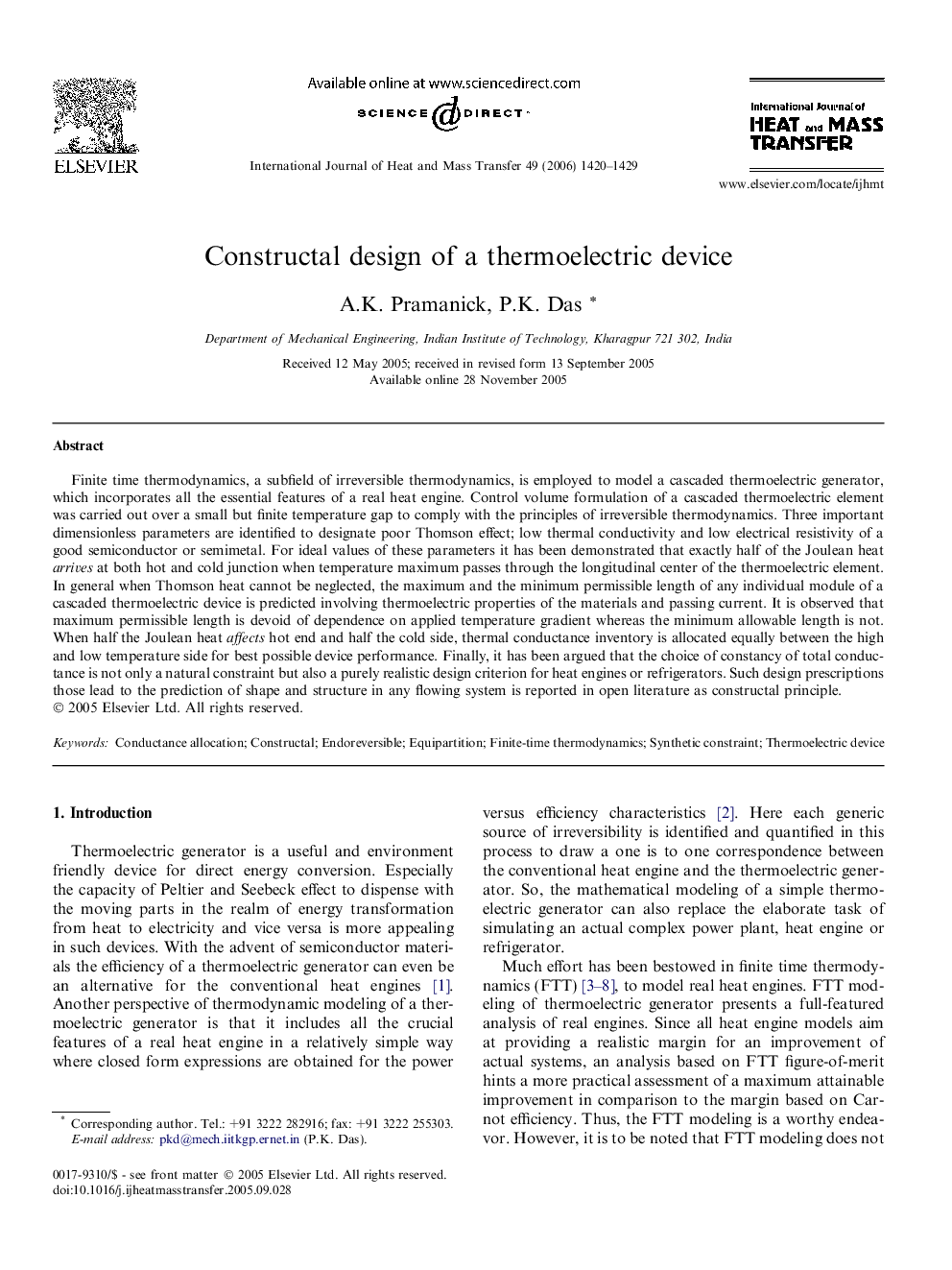| Article ID | Journal | Published Year | Pages | File Type |
|---|---|---|---|---|
| 662074 | International Journal of Heat and Mass Transfer | 2006 | 10 Pages |
Finite time thermodynamics, a subfield of irreversible thermodynamics, is employed to model a cascaded thermoelectric generator, which incorporates all the essential features of a real heat engine. Control volume formulation of a cascaded thermoelectric element was carried out over a small but finite temperature gap to comply with the principles of irreversible thermodynamics. Three important dimensionless parameters are identified to designate poor Thomson effect; low thermal conductivity and low electrical resistivity of a good semiconductor or semimetal. For ideal values of these parameters it has been demonstrated that exactly half of the Joulean heat arrives at both hot and cold junction when temperature maximum passes through the longitudinal center of the thermoelectric element. In general when Thomson heat cannot be neglected, the maximum and the minimum permissible length of any individual module of a cascaded thermoelectric device is predicted involving thermoelectric properties of the materials and passing current. It is observed that maximum permissible length is devoid of dependence on applied temperature gradient whereas the minimum allowable length is not. When half the Joulean heat affects hot end and half the cold side, thermal conductance inventory is allocated equally between the high and low temperature side for best possible device performance. Finally, it has been argued that the choice of constancy of total conductance is not only a natural constraint but also a purely realistic design criterion for heat engines or refrigerators. Such design prescriptions those lead to the prediction of shape and structure in any flowing system is reported in open literature as constructal principle.
